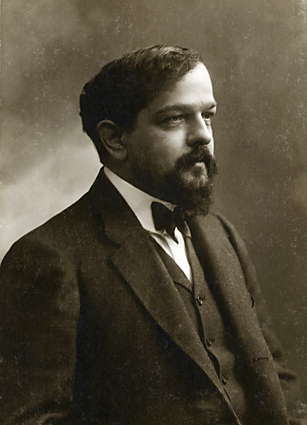The theme of this year’s Bowdoin International Music Festival (continuing through Aug. 3) is “Bach and Debussy,” two composers whose work would seem at first glance antithetical.
In reality, they have a great deal in common, in addition to their being among the glories of Western civilization.
We can never know what Bach would have thought of Debussy, although I believe his opinion would have been more favorable than not. Debussy’s “Martyrdom of St. Sebastian” has been compared favorably to Bach’s “St. John Passion” for its sublime musical depiction of tears.
Debussy’s own opinion of Bach was almost worshipful. To him, Bach was “a benevolent god, to whom musicians should offer a prayer before setting to work, so that they may be preserved from mediocrity.”
Strangely enough, he admired what audiences today find least appealing in the old master: “that musical arabesque, or rather that principle of ornament, which is the basis of all forms of art.”
During Debussy’s tenure as the recipient of the “Prix de Rome,” his principal objects of study were Beethoven’s Ninth Symphony and the organ works of Bach.
There’s an ironic cycle involving Debussy and Bach, with Hertor Belioz at the center. Berlioz objected to Mendelssohn’s revival of Bach, asking rhetorically who would want to hear such boring old stuff. Debussy never defended Bach, who needed no defense, but referred to Berlioz as “a monster. He is not a musician at all. He creates the illusion of music by means borrowed from literature and painting.”
The music of Bach and Debussy has some striking similarities, and not merely in its use of arabesques.
One of them is numerology. Lewis Kaplan, co-founder of the Bowdoin festival, delivers a world-famous lecture on numerology in Bach. Debussy was smitten with the numerical proportions of the Golden Section, which he used in many of his compositions.
The greatest similarity of all is in the use of musical form. Both composers used existing forms, but altered them or invented their own to fit the music, rather than vice versa. In the G-minor String Quartet, played on Friday by the Ying Quartet, Debussy combines cyclic and variation forms, with all four movements based upon transformations of a single motif.
Other Bach-Debussy highlights of the festival include violinist Midori’s performances of all Bach’s works for solo violin, today and Monday at Crooker Theater of Brunswick High School; all of the Brandenburg Concerti during the Festival Friday series; the Bach “Goldberg Variations” coupled with Debussy’s Sonata for Violin and Piano, and his Preludes for piano at the July 16 Monday Sonata concert; and the Debussy Sonata for Flute Violin and Harp at the July 18 Wednesday UpBeat! concert.
The Debussy Sonata for Cello and Piano will be played on July 23, and the festival will conclude on Aug. 3 with the Brandenburg Concerto No. 3, Debussy’s “Danses” for harp and string quartet and Tchaikovsky’s Concerto No. 1 in B-flat Minor for Piano and Orchestra, Op. 23, played by Ben Kim, piano, and the Bowdoin Festival Orchestra, Lewis Kaplan, conductor — about as far removed from Bach or Debussy as one can get.
Christopher Hyde is a writer and musician who lives in Pownal, He can be reached at:
classbeat@netscape.net
Send questions/comments to the editors.



Success. Please wait for the page to reload. If the page does not reload within 5 seconds, please refresh the page.
Enter your email and password to access comments.
Hi, to comment on stories you must . This profile is in addition to your subscription and website login.
Already have a commenting profile? .
Invalid username/password.
Please check your email to confirm and complete your registration.
Only subscribers are eligible to post comments. Please subscribe or login first for digital access. Here’s why.
Use the form below to reset your password. When you've submitted your account email, we will send an email with a reset code.